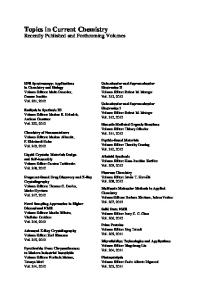The Potential of Low Frequency EPR Spectroscopy in Studying Pottery Artifacts and Pigments.
- PDF / 1,642,012 Bytes
- 9 Pages / 612 x 792 pts (letter) Page_size
- 26 Downloads / 331 Views
The Potential of Low Frequency EPR Spectroscopy in Studying Pottery Artifacts and Pigments. William J. Ryan,1 Nicholas Zumbulyadis,2 Joseph P. Hornak1 1 2
RIT Magnetic Resonance Laboratory, RIT Rochester, NY, 14623 Independent Researcher, Rochester, NY
ABSTRACT Non-destructive investigation, chemically fingerprinting, and authentication of ceramic cultural artifacts is a challenging analytical problem. Electron paramagnetic resonance (EPR) spectroscopy is capable of distinguishing between clays based on the paramagnetic metals present, and firing temperature (TF) based on the complexes of these metals formed at different TF values. Unfortunately, the 9 GHz frequency of conventional X-band EPR restricts sample size to a few mm and limits its applicability to small fragments. Low frequency EPR (LFEPR) is based on an EPR spectrometer operating at a few hundred MHz. LFEPR can utilize larger samples on the order of a few cm, but has a lower sensitivity due to the smaller Boltzmann ratio. Additionally, LFEPR may not be capable of detecting a spectral transition if the LFEPR operating frequency is less then the zero-field splitting of the paramagnetic metal complex. We utilized an LFEPR operating at 300 MHz which scans the applied magnetic field between the local Earth’s magnetic field and 26 mT to determine the feasibility of detecting EPR signals from clays, pigments, and glazes. Various clay samples were studied at 100 < TF < 1200 °C. Spectral differences were seen as a function of both clay type and TF. Differences in the LFEPR spectra of Han, Egyptian, and Ultramarine blue support the ability to distinguish among pigments. Paramagnetic impurities in glass may allow distinction between glaze spectra. We have also explored the utility of LFESR by the use of a radio frequency surface coil rather than an enclosed resonator. Although the active volume of the surface coil is ~1 cm3, objects as large as 20 cm in diameter might be easily characterized with our spectrometer. INTRODUCTION The main objective of the work reported in this paper is to explore the application of low frequency EPR spectroscopy (LFEPR) to the study of cultural heritage objects. Such objects can be works of art or artifacts of archaeological, ethnographic and anthropological significance. Cultural heritage science employs a diverse set of analytical methods, all which share the following attributes, at least to some extent. Ideally they should be (a) non-destructive, (b) fast, (c) simple, (d) provide relevant information, (e) mobile and (f) relatively inexpensive to implement. The two most commonly used non-destructive techniques are X-ray fluorescence (XRF) [1] and vibrational spectroscopy using fiber optic setups, most notably mobile Raman spectroscopy. [2] These techniques have been successfully used in solving many problems in authentication and object conservation and have provided significant insights for the understanding of early produc-tion technologies, trade roots, etc. Nevertheless, both analytical approaches have their limitations. XRF i
Data Loading...











